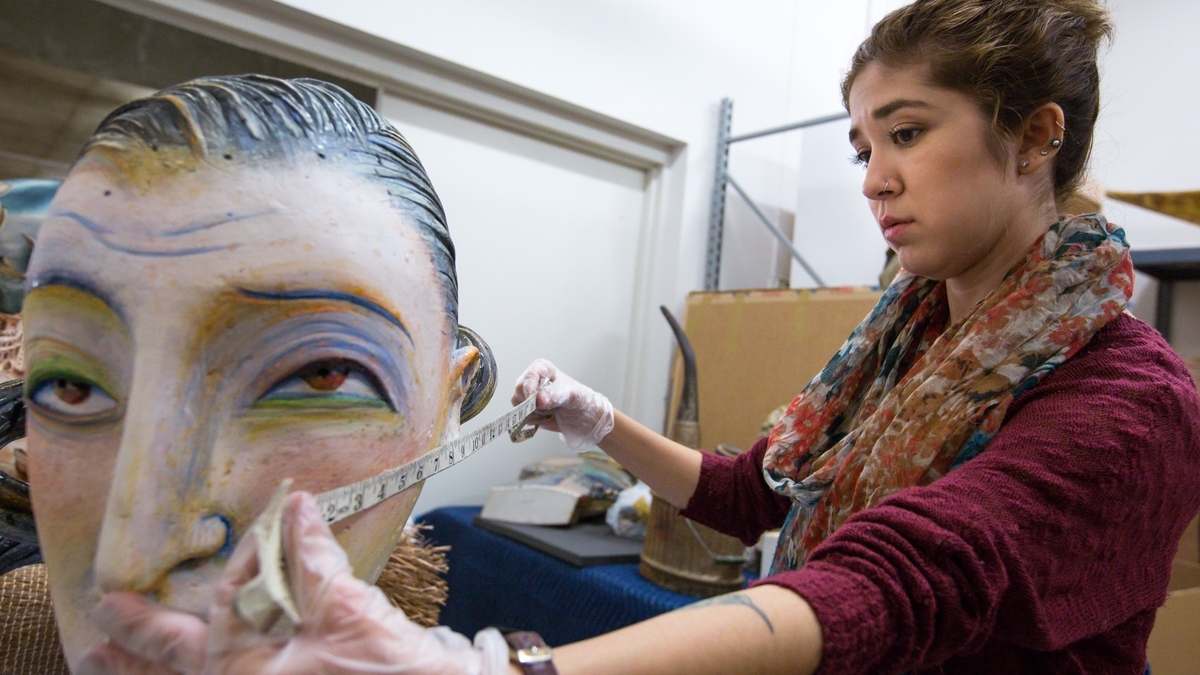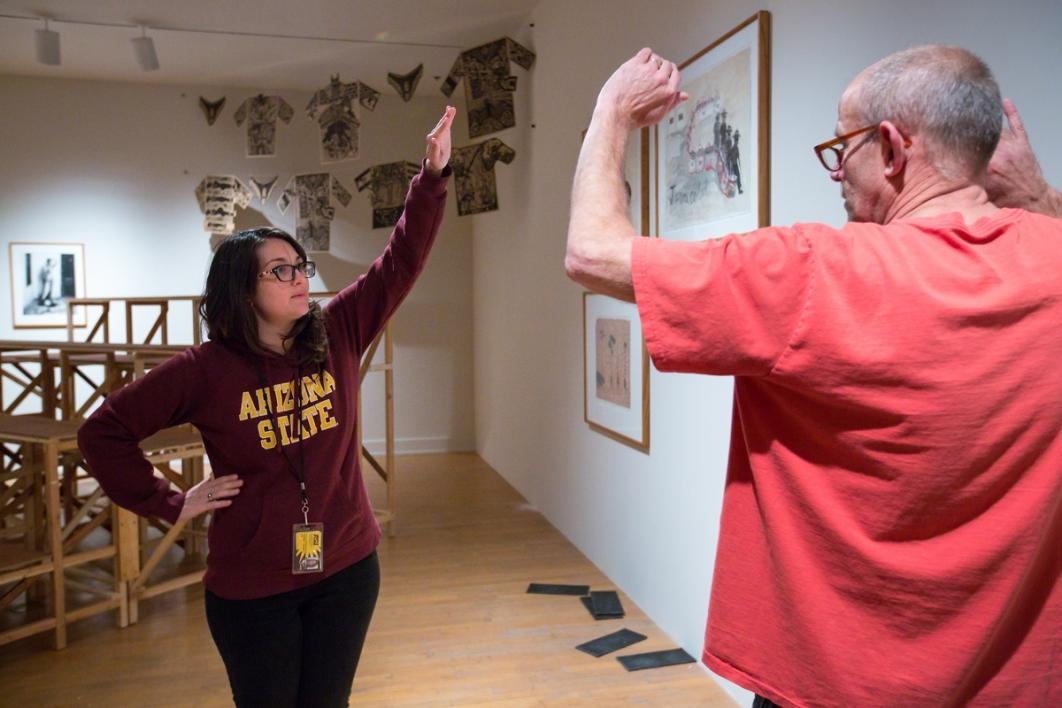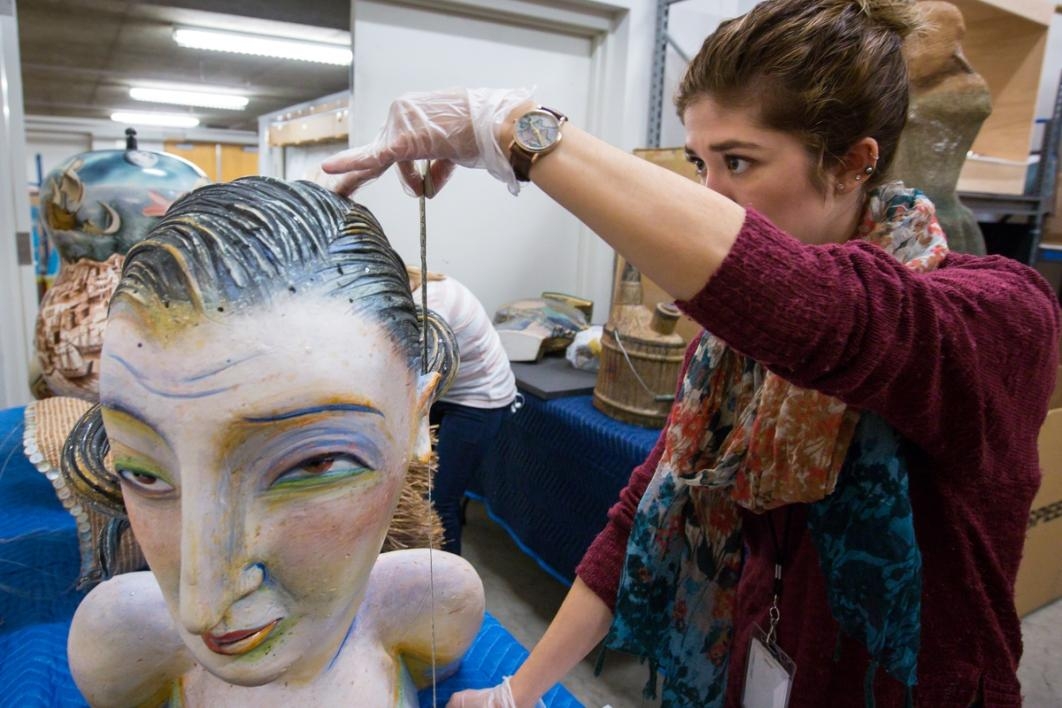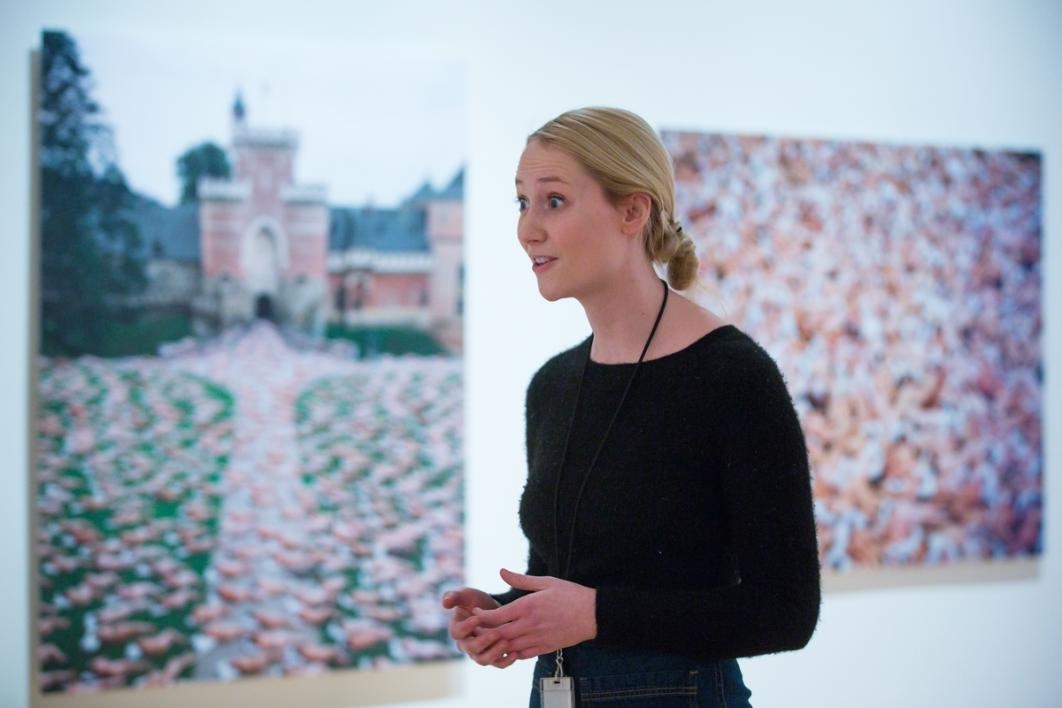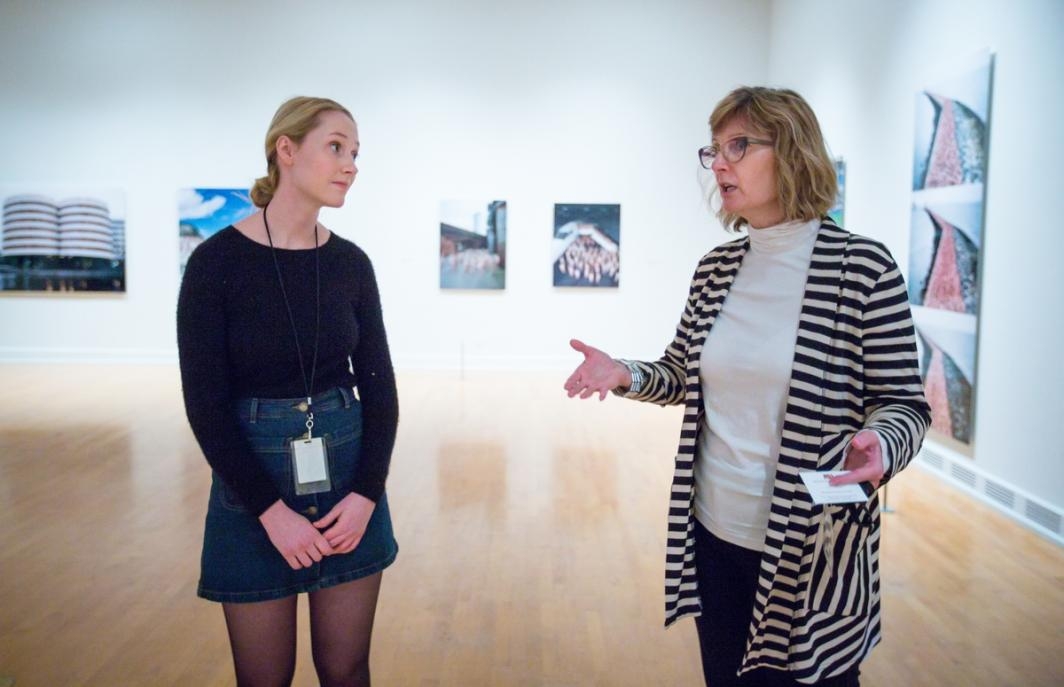In mid-January, the Arizona State University Art Museum premiered “Participant,” an exhibition chronicling 25 years of Spencer Tunick’s large-scale, conceptual nude photography.
Guests at the opening were met with a retrospective, on loan from local collector Stéphane Janssen. Both the artist and collector were present as patrons examined more than 20 images of volunteers staged in public venues across the world, studied their interpretive panels and discussed issues of nudity, privacy and performance. The most observant attendees took note that some 15 years into the series, Janssen began appearing as a subject in Tunick’s installations.
Months earlier, Angelica Fox was similarly enlightened.
Fox, an undergraduate studying art history and museum studies in Barrett, the Honors College, had just begun her role as one of the museum’s four curatorial interns.
The program, now in its 14th year of sponsorship by the Windgate Charitable Foundation, provides rigorous, paid training for ASU students hoping to become curators. Windgate — which has also provided grants for ASU Art Museum artist residencies, ceramics research and wood and fiber craft fellowships — recently increased its support to extend and enhance the university’s curatorial intern experience.
In her role, Fox was tasked with assisting senior curator and associate director Heather Sealy Lineberry to create a show, from scratch, that not only displayed Tunick’s work, but explored his ongoing connection with its collector — a rarity in art history.
“The first thing I did was Google it,” said Fox, who was previously unfamiliar with the photographer. “The show was so wonderful to work on. Not only did I get to learn about an artist I hadn’t heard of, I got to talk to Spencer personally and see what his practice was and his process was. It was just great to work on it from beginning to end and to see how many people come together to create one show.”
“One of the most important things we do is show students all that is involved in curatorial practice,” Sealy Lineberry said. “There’s project management, there’s fundraising, there’s human resources work because you’re managing a team, and in contemporary art you collaborate very actively with artists, community members and scholars. There’s a great deal beyond what you see on the surface, which is picking the art, putting it up and talking about it.”
In addition to helping select, display and speak about art, ASU’s student curators are involved with accessioning and deaccessioning works in the permanent collection, examining and documenting their condition, researching artists and how they fit into the museum’s curatorial strategy and helping welcome, educate and develop engagement programs for the public.
Because ASU’s is a contemporary art museum located within a comprehensive research institution, that often means making decisions collaboratively with artists and working with scholars from a variety of disciplines to involve community members in exhibitions and to find new ways to make the work relevant and powerful.
Curatorial intern Kev Nemelka, a master’s student in art history at the Herberger Institute for Design and the Arts, helped prepare “Watertight,” a gallery of video animations and sculptures by Cuban artists Sandra Ramos. Nemelka worked with Ramos to collect information about her symbols and motifs – many which explore themes of immigration, international borders and containment. His research informed decisions about which artworks to include in the show, and which best addressed topics of interest for the ASU and greater Phoenix communities.
He described how thoughtful curating can offer museum visitors a more profound encounter than they may get when viewing a prefabricated or travelling exhibition. He also clarified how professional curating differs from others common uses of the term.
“I think about this idea of cultural appropriation of the word ‘curatorial,’ ‘curate,’ etc. I think it’s important to have professional training,” Nemelka said. “Curators show a social reality. I think ASU does a good job of addressing real issues of where we live.”
Both Nemelka and Fox hope to work in museums after completing their studies.
“I look to every single curator I’ve met and if there’s anything I could do, I would love to be like some of those role models,” Fox said.
Recent alumni of the internship program have gone on to work at the Art Institute of Chicago, the Boise Art Museum and the ASU Art Museum, but Sealy Lineberry says their contributions are felt immediately.
“The Windgate curatorial interns bring their own perspectives, and they bring new and fresh ideas,” she said. “They have a tremendous impact in what we do here at the museum and how we present powerful, relevant exhibitions and programs of contemporary art.”
Just ask Spencer Tunick.
When Fox understood how much his photographs affected its participants and viewers, she put together a book of reflections from admirers of his work.
Little did she know Tunick would be so admiring of hers — when he saw the book on opening night, he loved it so much he asked to take it home.
Top photo: Art history and painting senior Ariana Enriquez takes measurements of recently donated "Portrait #2, 2000" by Patti Warashina, at the ASU Art Museum. Photo by Charlie Leight/ASU Now
More Arts, humanities and education
ASU FIDM students to see their designs on the runway at Uncertainty Fashion Showcase
Nola Hill is perfecting every stitch of her fashion design collection, which she started conceptualizing last summer.She is among 30 ASU FIDM fashion design students who have been working late into…

ASU+GSV Summit brings experts together to discuss innovation in education
This week, Arizona State University President Michael Crow and other university leadership joined education and learning experts from around the globe at the ASU+GSV education technology summit in…

ASU professor's project helps students learn complex topics
One of Arizona State University’s top professors is using her signature research project to improve how college students learn science, technology, engineering, math and medicine.Micki Chi, who is a…


